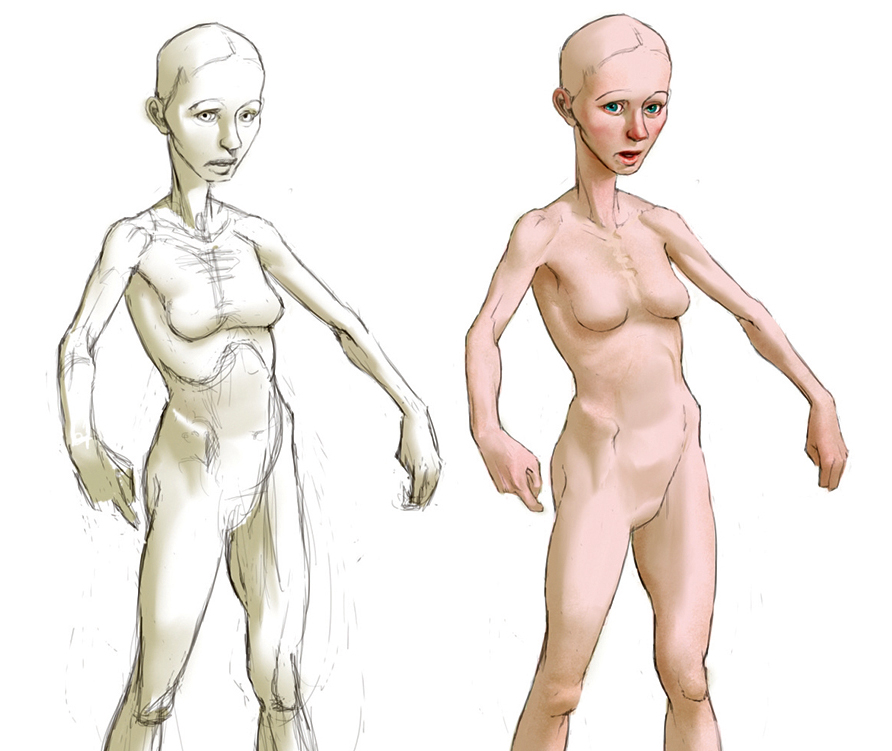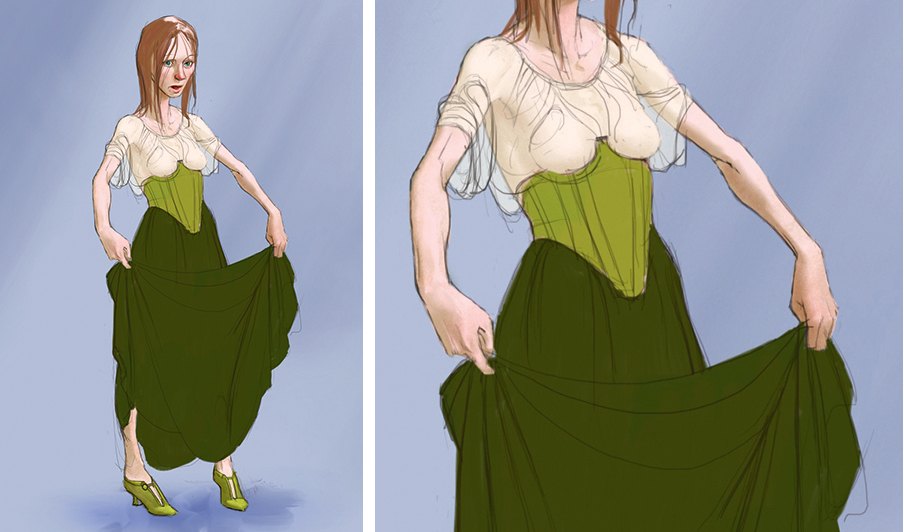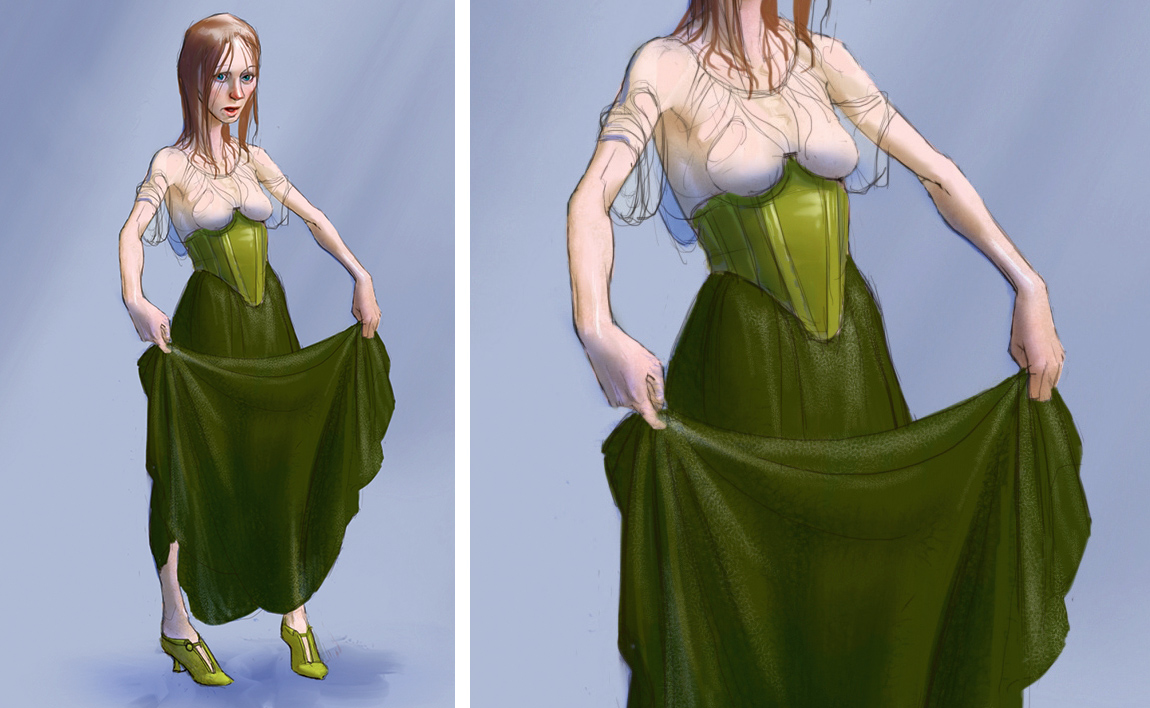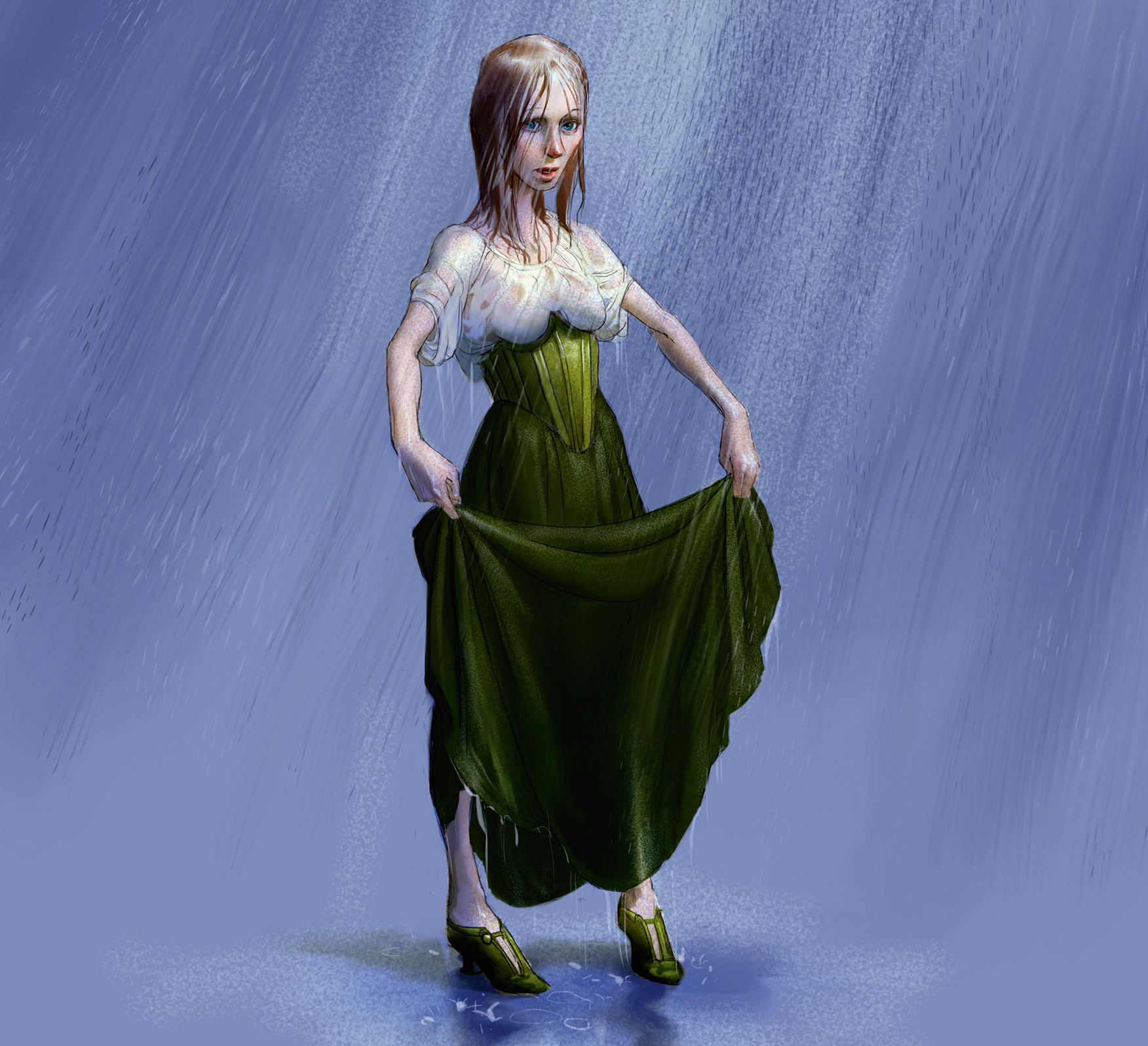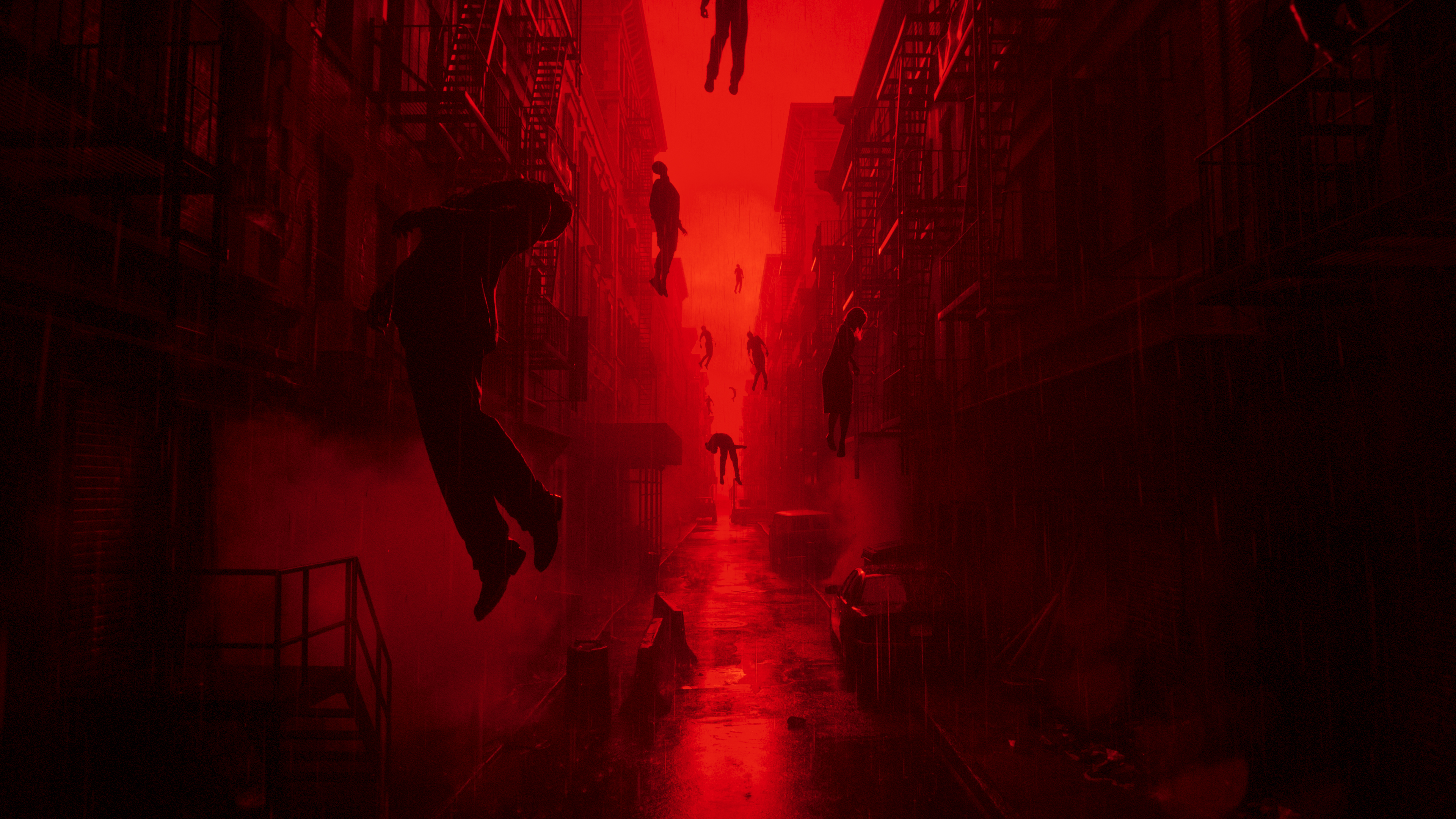How to draw a wet figure
How to create a character who has just been caught in a heavy downpour of rain.
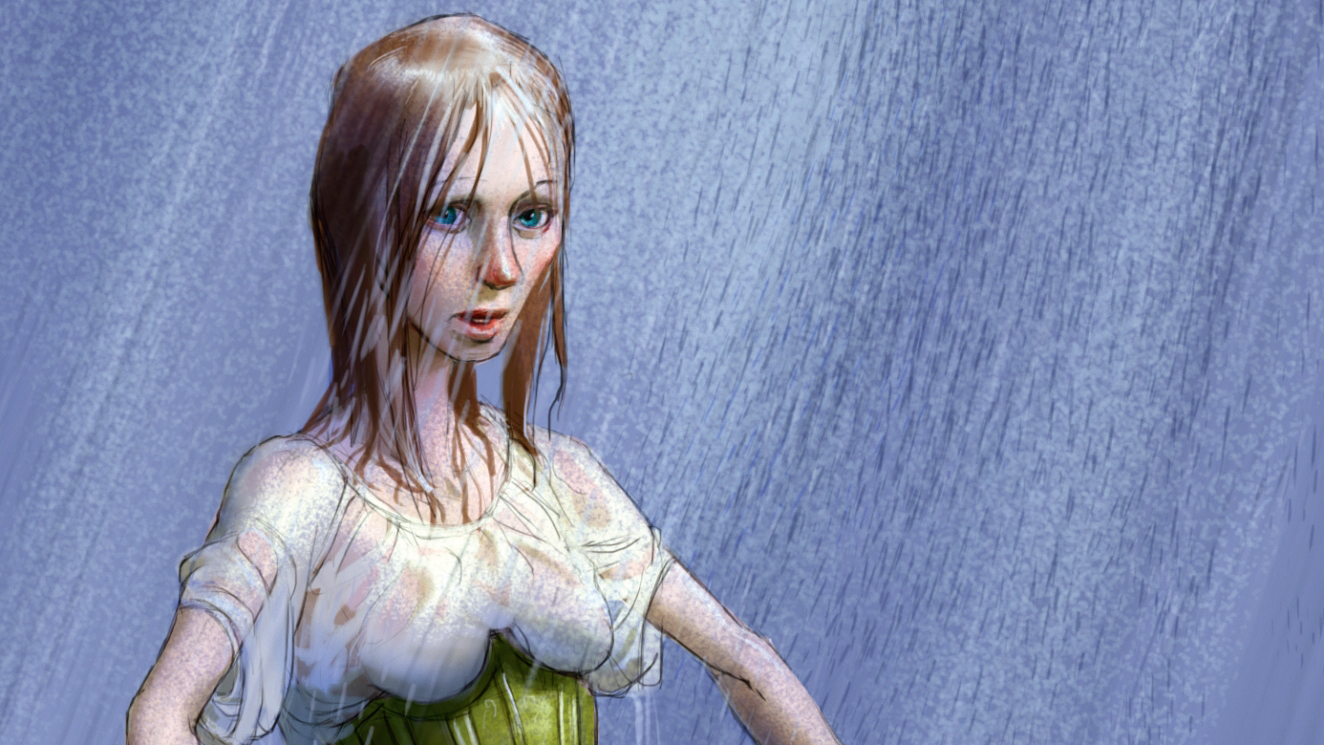
To paint a figure that looks believably wet requires you to take a number of factors into account – a key one being the type of fabric they are wearing. Start with an unclothed figure to drape the wet clothes upon. Follow these tips to find out how to draw a character who's just been caught in a downpour.
01. Start with an unclothed figure
Start out with an unclothed figure – this makes it easier to work out how the material will cling to the form. For this example, we're using a female figure with longish hair and flowing skirt.
It’s important to understand the character's figure, because wet clothing will cling to it more closely than dry. I sketch out a pose of what will be a young woman holding up her skirts slightly. This is done with Pencil and Paintbrush tools in SketchBook Pro.
02. Consider wet clothing
Sketch out clothes on a new layer. Remember that the extra weight of the water will cause the fabric to hang straighter than if it was dry – wet hair will behave in much the same way.
It's important to consider what fabrics the figure is wearing – think how wet leather looks and behaves differently to wet silk or cotton. While treated leather can have a degree of stiffness and water resistance, silk quickly becomes waterlogged and clings to the forms beneath it.
03. Explore colour
On another separate layer, block in solid colours – here we picked a green for the skirt and white for the blouse. Shading helps with the volumes. Paint with browns and purples on several layers set to Multiply.
Being wet will affect the colour of clothes and hair, so limit the spread of the highlights, where you want areas to look wettest. The figure's white blouse appears semi-transparent where it sticks to her skin.
Daily design news, reviews, how-tos and more, as picked by the editors.
04. Pay attention to details
You can emphasise the impression of being drenched by remembering that body posture plays a part. Wet clothes are less comfortable and heavier, so consider how this will influence the character's pose.
It will also affect how they move, and even how they behave – a wet person might choose a different route through a house to avoid spoiling an expensive rug, for example. Your figure work is likely to have more character if you give them a back story.
This article originally appeared in ImagineFX issue 146. Buy it here.
Read more:

English artist Nick Harris switched to a digital canvas in 2000, after 18 years of using traditional media. Most of his work involves creating artwork for children’s books, though he has also dabbled in animation, including some background work on the hit 1988 film Who Framed Roger Rabbit?. He has supplied a wealth of advice and tutorial help for illustrators in ImagineFX magazine.
